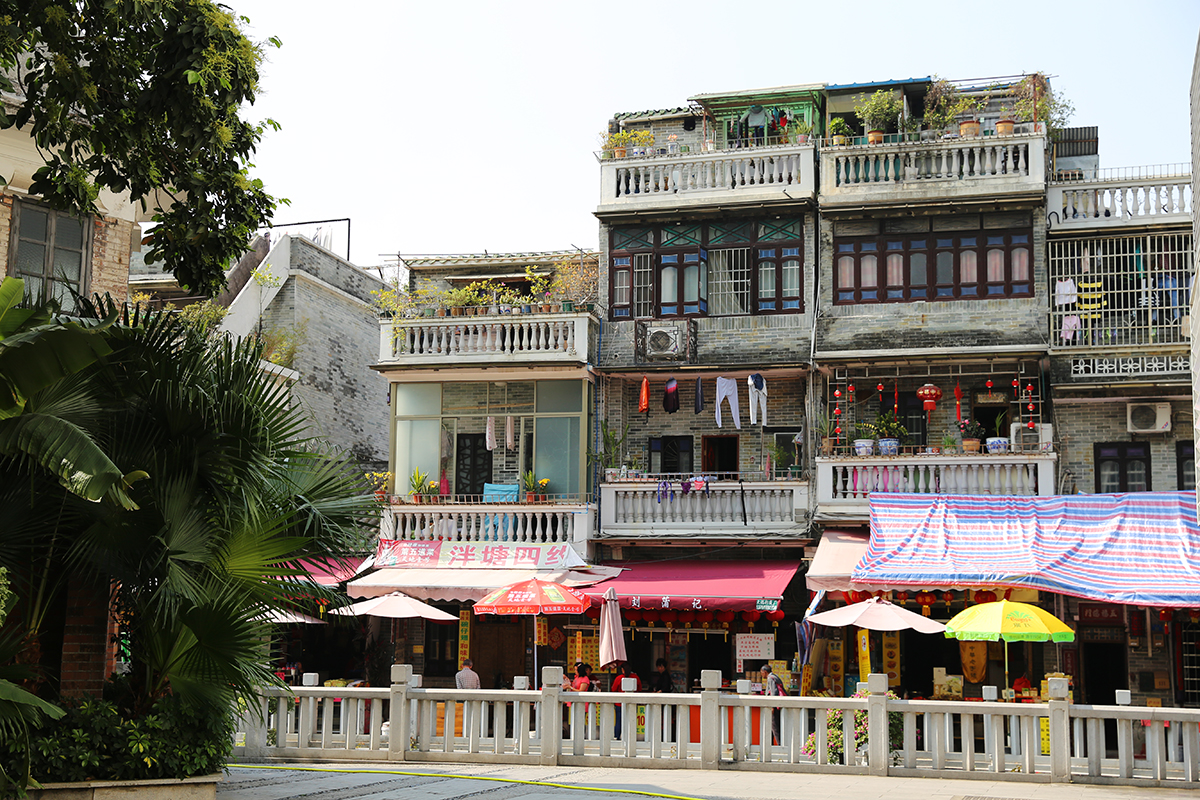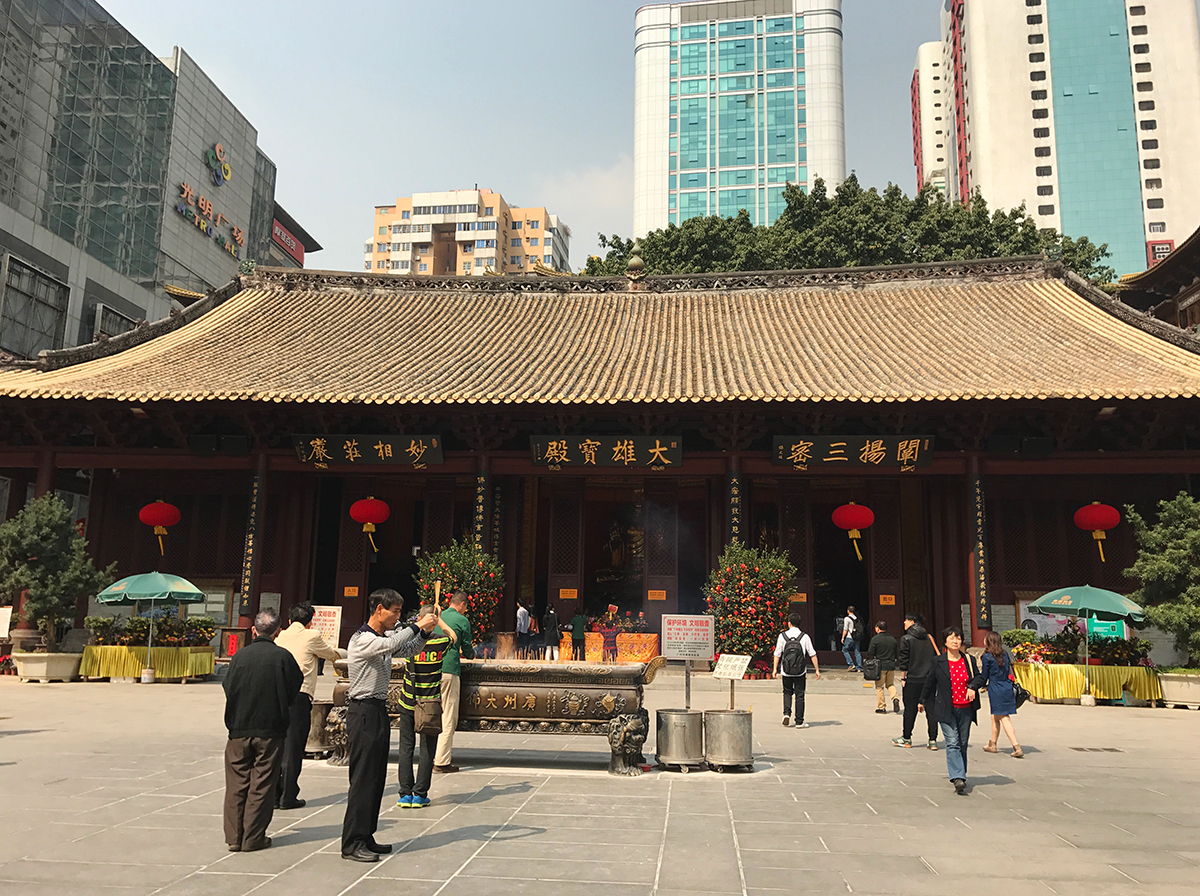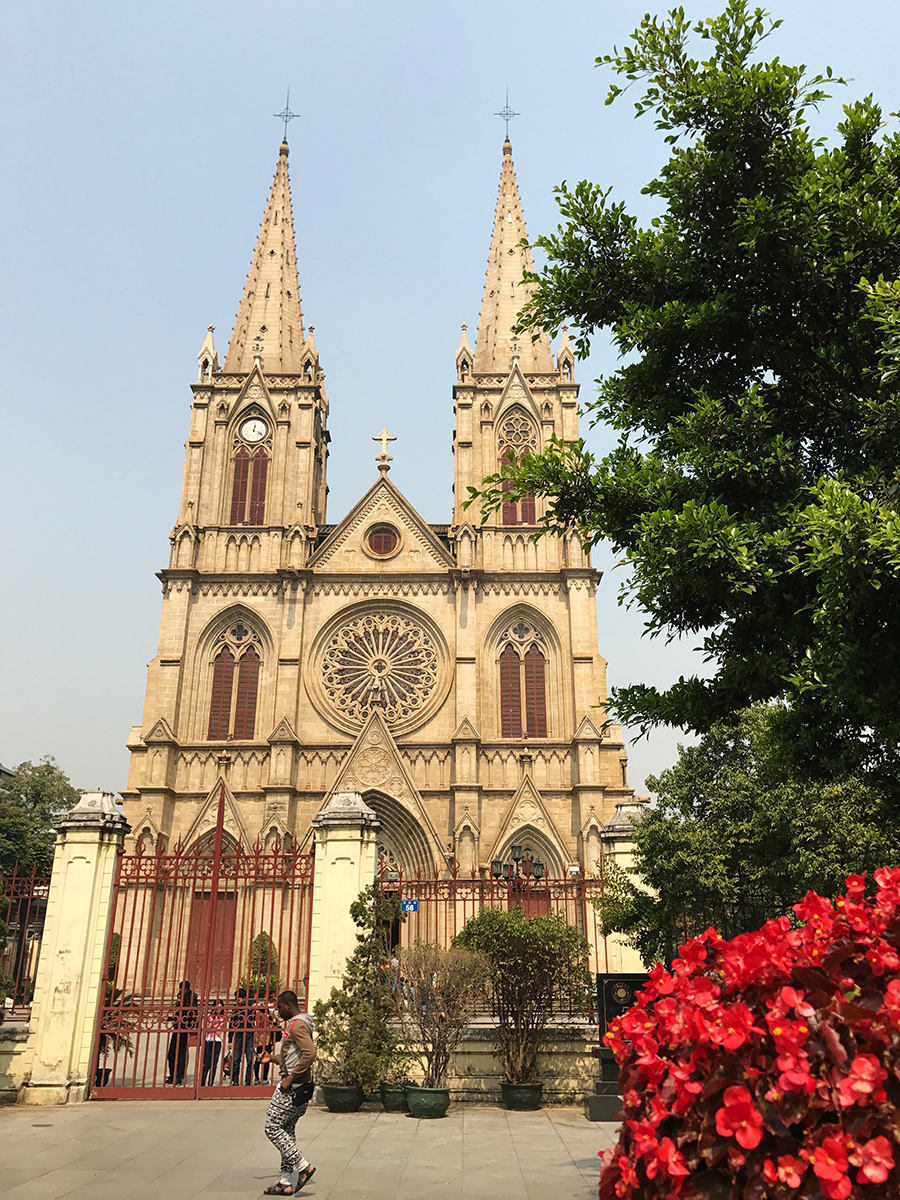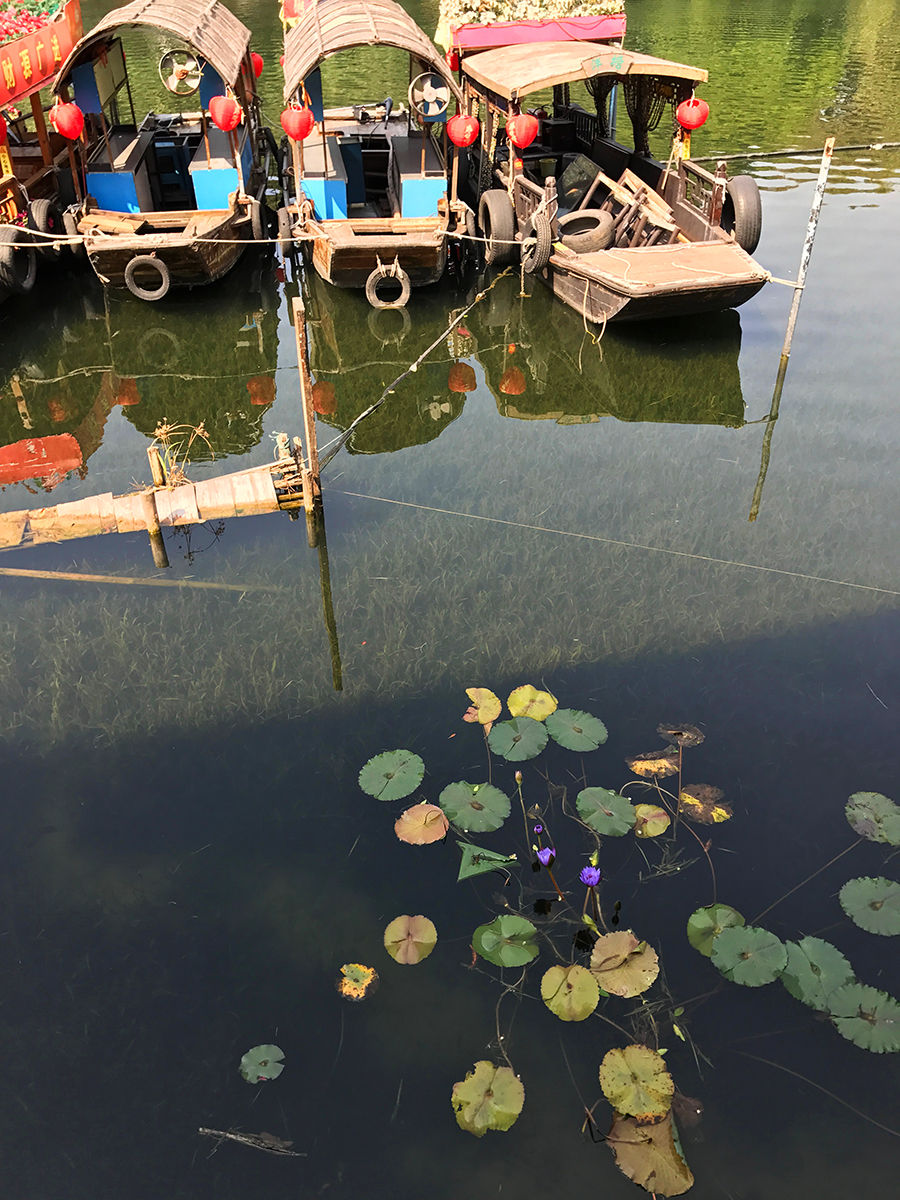
According to ancient legend, there was once a town in Guangdong province that suffered through a great famine. On the brink of starvation, the locals prayed to the gods for help. Suddenly, the clouds broke open and five celestial beings, each carrying a sheave of rice, descended from heaven riding five rams. They offered the sheaves to the people and taught them how to farm rice. When they finally returned to heaven, their trusted rams turned to stone and stayed in the town as a testament to the tale. From then on, the town prospered and the locals wanted for nothing.
In time, this small town would transform to become the third largest city in China: Guangzhou, the provincial capital of Guangdong province. It is nicknamed the “City of Rams” and the image of the five rams has become iconic, gracing everything from public statues to business logos. The original stone rams can supposedly be found at the Taoist Temple of the Five Immortals, where they rest in perpetual tranquillity among the ornate temple halls and lush floral gardens. So, if Los Angeles is America’s City of Angels, then Guangzhou is China’s City of Immortals!
The city was originally founded during the Spring and Autumn Period (c. 771-476 BC) under the name Nanwu. It didn’t receive the name Guangzhou until 226 AD, when it had already blossomed into a large and wealthy trading port. Its location along the Pearl River made it one of the most important ports in southern China and a major stop along the maritime Silk Road. Even during the Mongol conquest, the city still found a way to make the best of a bad situation!

Although it suffered much destruction during the initial turmoil, its economy surged during the Yuan Dynasty (1271-1368) thanks to the Mongolians’ ardent support of maritime trade. This good fortune was soon to reverse during the Ming Dynasty (1368-1644), when the Hongwu Emperor retracted his support of foreign trade and imposed a number of maritime trade bans. When the Portuguese sent their first embassy to Guangzhou during the early 1500s, they were forced to conduct much of their trade illegally. By the time the Dutch and the British arrived in the 17th century, foreign trade in China was still being carried out in secret.
While the Qing Dynasty (1644-1912) were more lenient and open to trade with their foreign friends, tensions soon began to rise in 1757 when they established the Canton System. This dictated that all foreign trade must take place in Guangzhou, so that the government could easily monitor and control the trade industry. Guangzhou swiftly developed into one of the world’s foremost trading ports, but the political atmosphere was rife with discontent. Foreign traders found the restrictions placed upon them irksome and unnecessary.

The breaking point came in 1839, when the Qing government seized and destroyed large quantities of British opium, and effectively triggered the First Opium War (1839-1842). After a humiliating defeat, the Qing Emperor was forced to sign the Treaty of Nanjing with Britain, which opened up a number of ports across the country to foreign trade. Almost overnight, Guangzhou had lost its privileged status as the sole trading port. By the end of the Second Opium War (1856-1860), large parts of Guangzhou had been carved out as foreign concessions and the city was virtually unrecognisable. The small town in the mountains of Guangdong had transformed into a bustling, multinational metropolis.
From 1895 until 1925, Guangzhou’s most illustrious citizen came to the fore: Sun Yat-sen[1]. His campaign to abolish imperial rule in China culminated in the Guangzhou Uprising of 1911, which paved the way for the Xinhai Revolution later that year. He made Guangzhou the base of his operations and it was in this city that, under his tutelage, political giants such as Chiang Kai-shek, Zhou Enlai, and Mao Zedong began their careers.
Its revolutionary days may be behind it, but nowadays Guangzhou is still heralded as a major centre for commerce. Its annual Canton Fair, which has been held every year since 1957, is the oldest and largest trade fair in China. Attracting business owners and entrepreneurs from across the globe, it is a testament to the city’s undeniable allure. However, there’s much more to Guangzhou than shimmering skyscrapers and lively shopping districts.

Sprawling areas of verdant greenery such as Baiyun Mountain, Nansha Wetland Park, and Yuexiu Park have earned it the nickname “City of Flowers”, while the traditional Xiguan Residences of Liwan District and the Western-style colonial mansions on Shamian Island add a touch of intrigue to the cityscape. Guangzhou’s multi-ethnic past is attested to by its many religious buildings, from the Buddhist Temple of the Six Banyan Trees to the Roman Catholic Sacred Heart Cathedral. The Huaisheng Mosque, which was originally built over 1,300 years ago, is widely considered to be the oldest of its kind in China and one of the oldest mosques in the world.
Historically speaking, the Chen Clan Ancestral Hall and Sun Yat-sen Memorial Hall make for an interesting mix, acting as proof of the city’s ancient origins and its revolutionary significance. The Chen Clan Ancestral Hall is a magnificent academic temple built by the Chen family during the Qing Dynasty, while the Sun Yat-sen Memorial Hall is a relatively modern construction that was built in honour of Sun Yat-sen.
Alongside these glorious attractions, Guangzhou is renowned throughout China for its mouth-watering cuisine and vibrant nightlife. Sample some of the finest Cantonese dim sum, marvel at a performance of Cantonese opera, or simply soak in the scenery on an evening cruise down the Pearl River. When it comes to this lively city, you’ll certainly have to ram a lot into your schedule!
[1] Sun Yat-sen (1866-1925): A Chinese revolutionary who played an instrumental role in overthrowing the Qing Dynasty, abolishing imperial rule and founding the Republic of China. He became the first president of China in 1912.
Explore more about Guangzhou with us on the unique travel: Explore the Ancient Fortresses of Southeast China